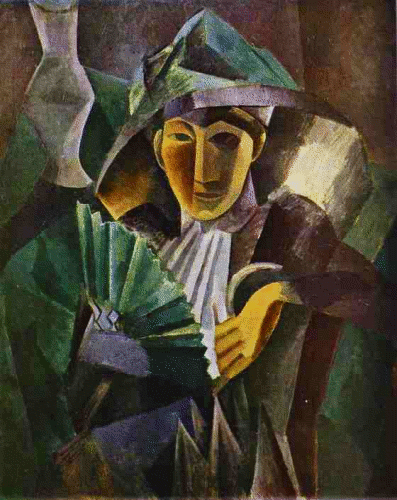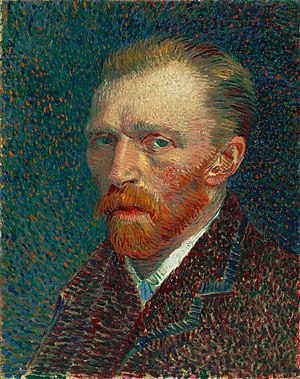Art House for Kids at Lakeshore/Clarkson, Mississauga, Call 905 819 8142
Art classes for children & adults by Meena Chopra at Lakeshore/Clarkson Mississauga
Join ART CLASSES on Lakeshore/Clarkson.
Drawing, Colouring, Water Colours, Crayons, Pastels, Oil Painting.
Call: 905 819 8142
Call: 905 819 8142
Art is essential in expanding the horizons of children beyond everyday life. Children that are exposed to art early, are known to do better and go further in life as art creates an inner connection within the child to its outer environment.
Showing posts with label Art as Therapy. Show all posts
Showing posts with label Art as Therapy. Show all posts
Saturday, December 3, 2016
Wednesday, March 25, 2015
Autistic Forms Of Teaching And Tolerance
Understanding how autistic children learn is key to teaching them with the same intensity as you teach other children. This may seem like a straightforward idea, but autistic children learn so differently that understanding autism itself is a must when you teach autistic children. By becoming educated in the disorder, teachers can effectively learn to deal with autistic children and adults both in and out of the classroom, creating a more understanding world for everyone
Autistic children are often visual thinkers. Thus teaching by speaking will not be entirely effective. Teachers should combine pictures with words for the autistic child to fully comprehend the lesson. For instance, if you are teaching about the animals of the world, you should have a flash card with the word “mouse,” say the word aloud slowly and clearly, and show the child a picture of a mouse. Perhaps even bring a live mouse in for show and tell. Nouns may be easier to teach autistic children since verbs require action and can be more difficult in illustrating. If you are teaching autistic children words such as “sit” or “stand,” you should complete these actions when you teach the word. Also, because of the tendency to be visual, autistic children are often unable to follow long sentences. They cannot decipher the sequence and become confused. Thus, writing instructions can be very helpful when proctoring tests or quizzes.
As visual thinkers, autistic children can often fixate on a particular object or picture. If this is the case, try incorporating that object or picture into lesson plans. If the child likes planes, try using planes for visuals wherever you can in the lesson. For example, when teaching math, create word problems about planes to interest the child. Autistic children also tend to be artistic or musical, producing highly original drawings and showing above average abilities with instruments or voice. Set aside time in the day for the arts and encourage activities that the children enjoy.
Autistic children may also have trouble writing because of the control over their hands and movement. This is frustrating for both the child and the teacher. To reduce frustration, allow the child to use a computer. If you can do this, make sure that the keyboard and monitor are close together as the child may have difficulty remembering what he or she has typed recently.
By being open to teaching an autistic child to the best of your ability, you are not only giving him or her the best opportunities in life, but you are also being a good role model to the other children in the class. Do not allow an autistic child to ruin the learning experience for others, but rather incorporate his or her oddities into your lessons as much as possible. Creating a more prejudice-free classroom is the best gift you can give this child.
Original source: HERE
#Autism #Art
Art House for Kids at Lakeshore/Clarkson, #Mississauga, Call 905 819 8142Sunday, December 9, 2012
Art and its incredible effects on mind - An insight
Art and its incredible effects on mind - An insight
Author: Meena Chopra(Author, Artist Educator)
Art House for Kids-Art as healer
has always improved the quality of life and mind giving a third dimension to
the human personality in many ways. Art as a
medium to explore life within and without has always given immense enjoyment to
human mind from ages.
.
Many of the most famous pieces in the Pop art movement have utilized popular
advertisements that could be easily tied to past memories. Pop art is known
very well for its use of bright, vibrant colours.
Author: Meena Chopra(Author, Artist Educator)
| Pop art sculpture (Photo credit: paulafunnell) |
Music, dance, painting and other forms of art have shown to have an
incredibly significant and positive effect on children and adults both.
.
 |
| Starry Night by Van Gogh |
| Van Gogh's Chair (Photo credit: Wikipedia) |
Art therapy has been used to awaken the senses of
underprivileged children through both the viewing and creating of art by them. Through
their artistic endeavours they subconsciously associate themselves with their
past. A connectivity is developed within and the memories come more freely from
the deeper self since they are not elicited by direct objects, but indirect subconscious
thought levels.
 |
| Sun Flower by Van Gogh |
Because of many past experiences which get embedded
deep down in the memory lane, many children begin to develop nervousness,
anxiety, sleeping excessive or too little, a lack of verbal, social and
language skills. Depending on the colour within a piece or its shape, or due
to some other quality of the artwork, different emotions can be evoked by the
observer unknowingly. Awakening of the senses through experimentation with the
different types of art these children experience an untapped emotional world
within themselves and with this association with their own inner being, they
are able to show increased abilities in their cognitive, motor and social
skills.
 |
| Piccaso - Woman with Fan |
Pop art is specifically tied to nostalgic thoughts
since many of these works utilize old comics, food wrappers, advertisements and
other types of art that people may recognize from past events in their lives.
Pop art is especially useful in helping evoke past memories by getting
down to stream of consciousness and gain insight through the use of bright colours.
Nostalgic undertones, emotions and feelings surrounding past events can be
easily conjured up and come on the surface of mind through the study of Pop
art.
According to a 2010 study conducted by researchers
at the Emory University School of Medicine, viewing paintings as opposed to
photographs of similar objects evoked more of a sense of reward within the
brain. Participants in the study were shown pieces from different artists
such as Van Gogh and Picasso, and then they were showed photographs that
depicted very similar objects. When they studied the brains of
the participants through imaging technology, the ventral striatum, which is
part of the reward system, became more strongly activated when the participant
saw a painting rather than a photograph of a similar object. Even though
momentarily, the memories they experience have shown to increase positive moods
and improve their quality of life.
Pop art, for example, impacts different people in
different ways. Clearly different aspects of art and the participation in the
arts can have a profound and positive effect on the human mind and also give it
a direction. Most forms of art are able to impact the human mind in one way or another
Art with its strong ties to commercial consumerism has a power to evoke emotion
in people. For that matter not only Pop art but any kind of can be used to help
stimulate the recesses of the mind there by help in the process of resolving
issues which are reflecting in the real life.
 |
| Beatles |
Bright yellows often evoke a feeling of happiness, which is a very common color in Pop art pieces. For example, if someone is dealing with a childhood trauma, memories from childhood can help them figure out exactly what happened and how to move past it.
| Self-Portrait, Spring 1887, Oil on pasteboard, 42 × 33.7 cm., Art Institute of Chicago (F 345). (Photo credit: Wikipedia) |
Utilizing art to delve into past memories can be
very therapeutic for many different reasons. Alzheimer's patients are
often involved in music therapy, which has shown to help them recover and
reconnect with the past memories therefore acting as a healer and giving a
positive impact to the mind towards its improvement and wellbeing.
What is most important is to explore
the impact that art has on the human mind and figure out how to positively
harness the impact and minimize any negativity.
Related articles
Subscribe to:
Posts (Atom)












